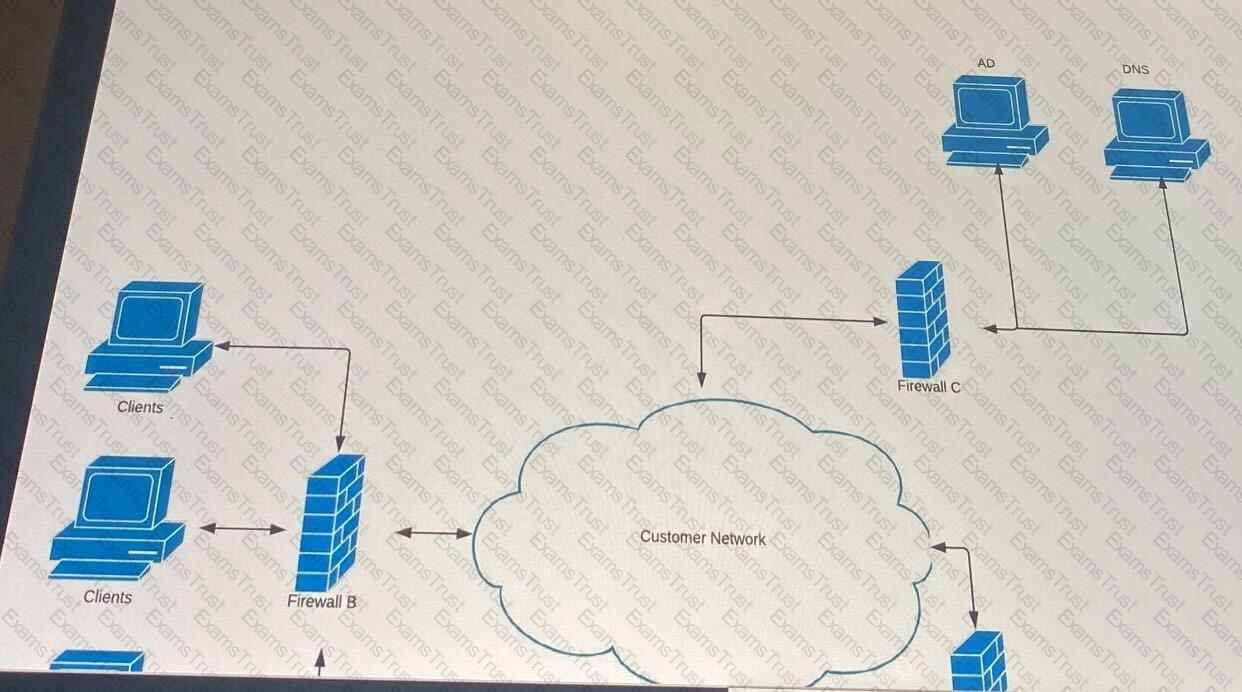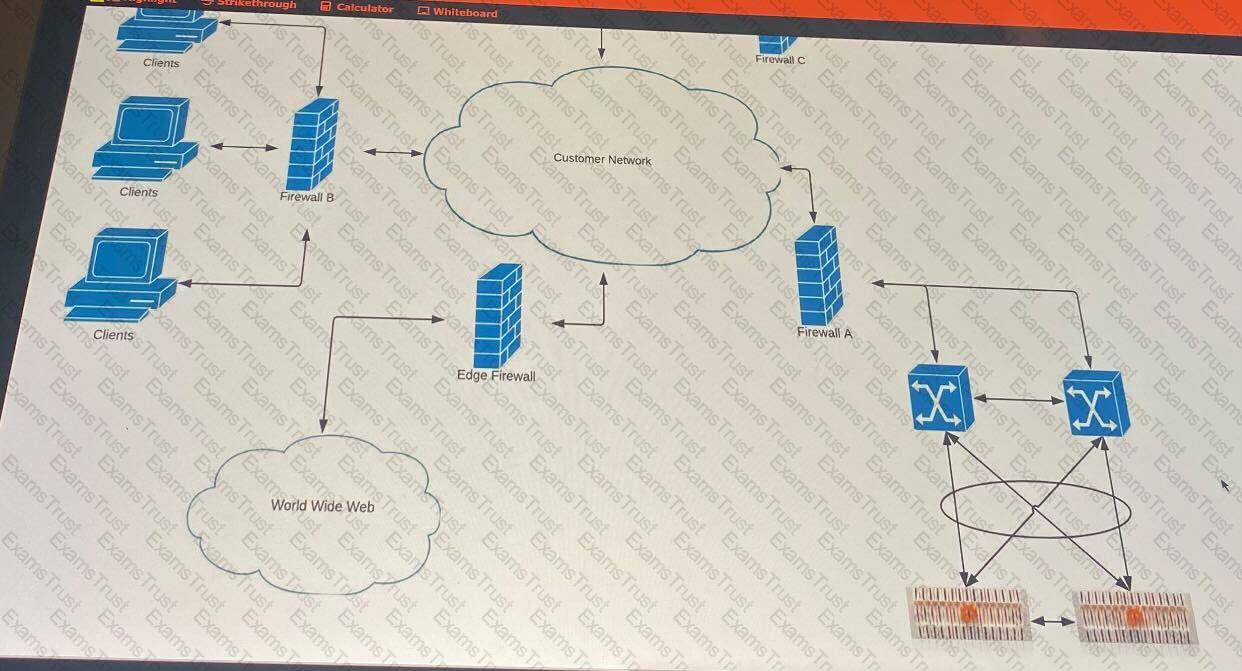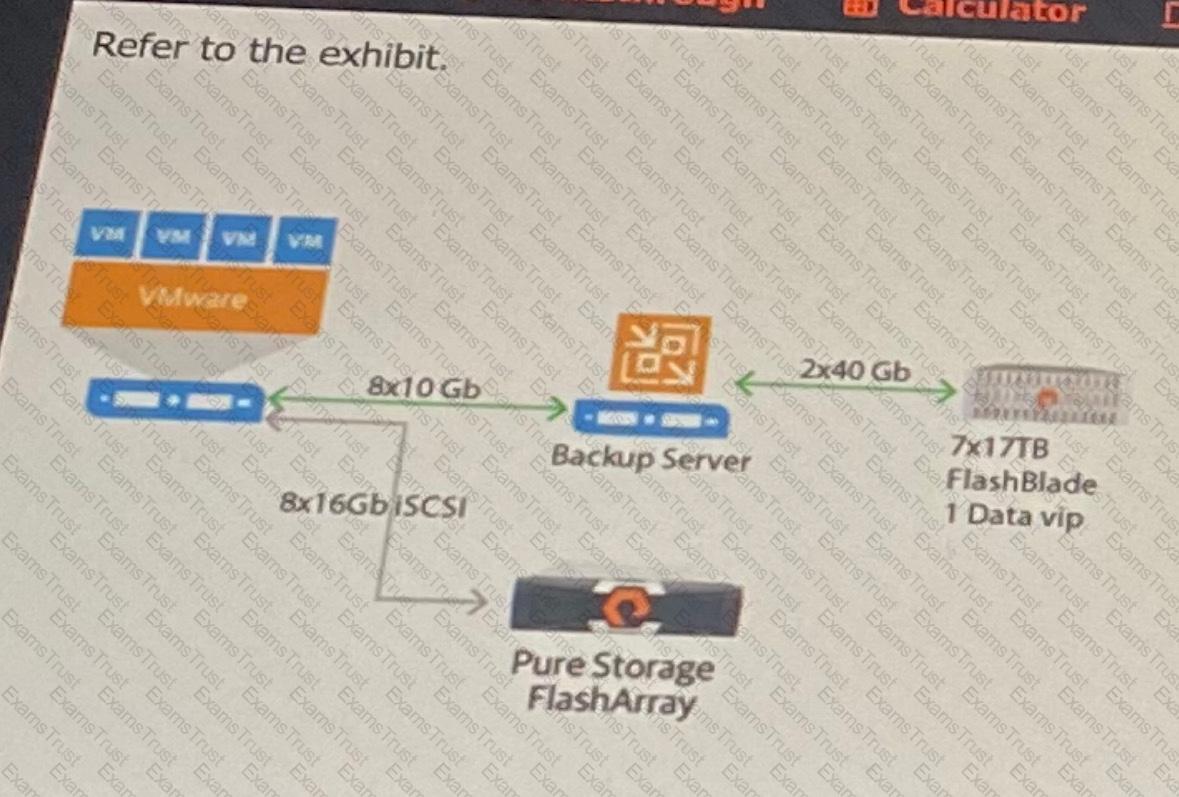

The customer provides the network diagram shown. The customer wants to use RBAC and SMB on the FlashBlade. The customer does NOT use encryption for identity-related traffic.
Which ports must be opened for this to work?
A retail customer is designing a new application that will train an AI algorithm with metadata from purchase transactions.
The customer has the following constraints:
-Billions of transactions per hour
-Hundreds of thousands of clients
-Easily connect and disconnect from many network locations
-Asymmetric encryption across a WAN
-Resilience to network latency
Which protocol should the architect recommend?
Which of the following benefits does FlashBlade SafeMode offer?
A developer of a business-critical application is concerned about system reliability when it comes to a IO resistance. An architect needs to explain the FlashBlade write mechanism and address three main concerns:
-Data location when FlashBlade acknowledge a write
-Number of created data copies before FlashBlade acknowledges a write
-Blade failure resilience
When does write acknowledgement happen?

A customer decides to use S3 as a protocol between the Backup Server to FlashBlade. The Backup Application S3 client in multi-threaded. What is the expected maximum restore throughput?
A customer is a heavy Windows user and generally uses SMB for everything, including backups. The customer wants to refresh the storage used within their backup environment. The customer is using Commvault for the backup software.
Which protocol should the architect recommend?
A customer is adding a micro-service to an existing application and needs to use the same user and S3 bucket. The current secret key is unknown.
What should the customer do to resolve this issue?
A customer is using the FlashBlade as an image database backup/restore target. The dataset that they are backing up is 100TB. The customer has a 5-day snapshot retention policy, and an average of 50TB of data change from day to day.
Which factor will alter the physical datasize?
An oil company moves geological data between their offices in Dubai and Houston for redundancy. The data is accessed via NFS mounts on a cluster of three 10GB connected Linux servers at each location.
A series of cron jobs are leveraged to replicate data from data storage pool A in Dubai to data storage B in Houston and from data storage A in Houston to data storage pool B in Dubai.
Data in storage pool A is read-write, updated by 50 cellular connected data collector running in the field, and deleted after 30 days.
Data in the storage pool B is read-only, queried by the firm’s analytics team, and copied to a cloud-based archive repository every 30 days.
The total amount of data in pool A in Dubai is 1.5PB
The total amount of data in pool B in Houston is 500TB
The data is not expected to grow in the next 12 months and is compressed by the application.
Which configuration should the architect present to meet this customer needs?
A . A Multi-Chassis FlashBlade with 52TB blades for each site focusing on simplicity.
B. A Multi-Chassis FlashBlade with 17TB blades for each site focusing on performance.
C. A Multi-Chassis FlashBlade with 52TB blades for each site and third-party replication software. ***
D. A Multi-Chassis FlashBlade with 17TB blades for each site and third-party replication software.
A customer need to analyze the performance data outside of Pure1 and Purity//FB.
Which two tasks should the customer perform? (Select two.)
A customer has two workflows. One workflow can use either SMB 3.0 or ISCSI. The other only leverage NFS.
What should the architect recommend as a strategy?